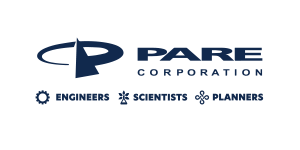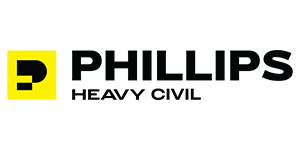Resource
2017 ASDSO Annual Conference Proceedings
Abstracts or Papers Available Through the Database:
• 3 floods/365 days: How Emergency Planning Saved the Day (R. Anderson)
• B.F. Sisk Dam – Core Considerations for Dynamic Deformation Analyses (R. Arulnathan, T. Adams, E. Newman, S. Murugaiah, R. Kuzniakowski and D. Gillette)
• Waiting to Fail: 100 Years of Deferred Attention (R. P. Bass, F. Y. Abdo and R. E. Martin)
• Levee Rehabilitation, Lower Wood River – East Alton Il. - Deep Cutoff Wall (M. Bertoni, W. Schmutzler and G. Bryant)
• The Potential Failure Mode Analysis Does Fit All Sizes – The Foundation for a Successful Dam Safety Management Program (F. L. Blackett and D. D. Boyer)
• Dam Safety Improvements – What’s the Purpose? (J. Boomer, N. Walker and G. G. Glunz)
• Risk Assessment of the New Orleans Hurricane Storm Damage Risk Reduction System Complex Closure Structures (D. S. Bowles, D. L. Moore, R. A. Turner and S. S. Chauhan)
• Errors, Misunderstandings and Mistakes in Remedial Grouting Projects for Dams (D. A. Bruce, T. L. Dreese and C. Hallahan)
• What Happens if the Dam Breaks? An Owner's Successful EAP Program in Light of the SC Floods (M. Caldwell, H. Walker and M. Turner)
• Advances in Monitoring of Underwater Infrastructure: Dam Condition Assessment using Remote Technologies (R. O. Clarke, D. Cousineau and B. Becker)
• Policies, Perspectives, and Priorities on Mine Tailings Dam Regulation in the U.S. (C. F. Cobb, A. Sengupta, J. T. Pawloski, L. Opperman and J. A. Falk)
• Lessons learnt from embankment dam failures by static slope instability (J.-R. Courivaud, A. Vogel and T. Charvin)
• Effective Application of Three-Dimensional Numerical Modeling for the Design and Analysis of Dams (B. M. Crookston, L. W. Crowley, C. M. Johnson and D. B. Bung)
• Leveraging 3D Modeling to Enhance Dam Design and Construction Management (C. R. Davis, J. Kudritz, J. Deible and J. Bench)
• Filter Diaphragm Performance in New Dam and Dam Rehabilitation Projects (B. C. Doerge)
• Fort Peck Dam Spillway Modifications – Rock Anchors in Bearpaw Shale (E. E. Drumright and D. M. Yadon)
• Fredonia Flood Retarding Structure: Is It a Dam or Levee? (R. A. Eichinger)
• Reclamation’s Consequence Estimating Methodology – Using a Two Dimensional Hydraulic Model to Increase Confidence in Fatality Rate Selection (B. D. Feinberg)
• Reducing Relief Well Clogging and Pore-Water Pressures Using Natural Groundwater Pressures and a Packer-Purge System (B. A. Fowler, S. J. Rabasca, L. Devaudreuil and C. O'Connor)
• Melding Pathways and Mechanisms for Internal Erosion Failure Modes (J. W. France and J. L. Williams)
• Rock Blasting Induced Vibration Effects on the Integrity of the Dry Comal Creek Flood Retarding Structure (D. T. Froedge, M. Sharif, D. Rudenko, B. Warner, M. Edwards and G. Rigsby)
• The Impact of Dam Failures on the Development of Dam Safety Legislation and Policy in the 1970s (N. Gee)
• Reducing Project Risk Associated with the Use of CFD (D. Gessler, K. Hall, B. Mater and Z. Taylor)
• The Use of Specific Studies to Help Engineers to Better Estimate the Mechanical and Dynamic Properties of Embankment Soils. Case Study In South-Eastern France (B. Girard, D. H. Doan, N. Droniuc, C. Guilleman, F. Stoelben and S. Cappy)
• Evaluating the Spillway Capacity of the Morning Glory Spillway at Harriman Dam (D. M. Gomez, D. Gessler and J. J. Donaghy)
• An Overview of the Hurricane Matthew in North Carolina Dam Risk Management Report (K. Goolsby-Brown and J. G. Plisich)
• History Being Re-made: Stabilization of a 146 year-old Gatehouse in a High Hazard Class Dam (J. J. Gregoire and J. D. Andrews)
• Benefits of Risk-Informed Decision Making Methods for State-Regulated Dams (M. J. Harris, S. Drew, T. E. Hepler and T. J. Fitzgerald)
• Technical Summary of Protections 2016 (T. E. Hepler, B. M. Crookston, W. R. Fiedler and M. A. Toledo)
• Dam Rehabilitation and the National Flood Insurance Program – What Designers, Regulators and Dam Owners Need to Know (A. J. Hess and R. Knarr)
• Outlet Inspection Sleds – Slip Sliding Away (C. D. Hill and J. Ward)
• Do Yesterday’s Earth-Cut Spillway Designs Meet Today’s Standards? The Ins and Outs of Earth Spillway Design and Integrity Analysis (W. Hollenbach, P. G. Schweiger, K. R. Finemore, L. A. Deichert, T. Ridley and J. McClure)
• Stilling Basin Design for Stepped Chutes: More than one type to consider (S. L. Hunt and K. C. Kadavy)
• Collaboration and Partnering Reduce Risks at Willow Creek Dam (S. L. Jamieson, J. Clark, N. Young and D. B. Lopez)
• A Fast and Cost-Effective Dam Breach Inundation Mapping Tool for Use in Emergency Response Preparedness or in Re-Assessing Hazard Classifications on a State-Wide Scale (M. C. Johnson, T. S. Grout and D. M. Moffitt)
• A Heightened Focus on Public Safety at Dams Does Not Happen by Accident (T. W. Johnston, A. C. Echols, E. E. Fromherz, P. G. Schweiger and W. F. Foos)
• Geotechnical Design Criteria for Large, Dry, Flood Control Earth Dams (C. Jones and D. Back)
• Enhanced Real-Time Rainfall and Flood Forecasting – Understanding the Storm and Implications for Dam Safety (W. D. Kappel and J. V. Bellini)
• Assessing Hydraulic Interconnection between the Reservoir and Downstream Seeps at Hardy Dam (B. E. Kelly, A. Monroe, I. Contreras and M. Walter)
• Condition Surveys of Inaccessible Areas of Concrete Dams (E. Kopelson and M. T. Likavec)
• Putting the STOP in Waterstops (J. Kudritz, R. Adams and C. R. Davis)
• Discovery and Remediation of Deteriorating Timber Trestles within an Embankment (W. W. Kussman, B. Tri and D. S. Steines)
• Underwater Acoustic Remote Sensing for Predictive Maintenance Modeling of Dams (K. J. LaBry)
• C. W. "Bill" Young Regional Reservoir Rehabilitation: 5 Miles of Embankment Dam Repair (E. K. Landowski, T. L. Dreese, J. A. Wilkes and R. E. Blankinship)
• The Black Knight of New England Dams – Mendums: Monitoring its Deficiencies, the Ensuing Drawdown and Reconstruction (G. E. Levergood, C. S. Krautmann and C. Clark)
• Seismic Stability Analysis and Risk Assessment of Lake Elmer Thomas Dam (A. Lopez, S. L. Jones, A. Coy, B. Iarossi and J. W. France)
• Chicago Sanitary and Ship Canal at Lockport - Rehabilitation Case Study (T. Mack and A. Goodall)
• Steel Wire Mesh Reinforced Geomat for Embankment Damage Protection from Rodents and Burrowing Animals (S. Mandavkar, P. Di Pietro and M. Weldu)
• Development of F-N Curves for Public Safety Risks Associated with Dam Failures in the U.S. (M. W. McCann Jr. and B. A. Lundqvist)
• Construction of Dam 1E for the Panama Canal Pacific Access Channel (L. H. Mejia, J. Toose and J. Fernandez)
• Filter Media Clogging of Small-Slot Drainage Pipes (M. T. Miller and G. Hillhouse)
• Stabilization of Landslide above Lower Cabin Creek Dam and Reservoir (G. J. Monley and J. A. Ferentchak)
• Fort Hood Dam Safety Program Development (D. Mortensen, M. Ickert, C. Eickenloff and L. Schaub)
• Best Practices in a Tainter Gate Rehabilitation Program (M. L. Moses and C. L. Bukhair)
• Emergency Stabilization of Bryan Lake Dam (J. C. Murphy, W. Williams and D. P. McIntyre)
• Using Soil-cement to Construct an Overtopping Gravity Dam (A. P. Nix and S. Riedy)
• Levee Safety Practices in the Keystone State (A. J. Orlovsky)
• Considerations for Precedent-Setting Filtered Tailings Facilities in the Future (K. Patterson, J. Casey, L. Robertson, H. N. McLeod and L. Murray)
• Independent Review Panels – Are They Right for Your Project? Experiences and Lessons Learned - Part III “Is It Us Against Them?” Series (G. S. Paxson, M. Lemieux, D. J. Miller, J. J. Franz, D. L. Johnson, R. Raeburn and D. J. Montgomery)
• Advances in Flood Hydrology for Modeling High Elevation Mountain Basins in Colorado with Applications to the Gross Dam Enlargement Study (M. A. Perry, J. J. Franz, C. Dick and W. D. Kappel)
• Tibble Fork Dam Rehabilitation (J. S. Price, B. E. Price, S. R. Johnson and B. D. Horrocks)
• Risk Evaluation of Smaller Levee Systems – A Prototype (K. J. Ranney, M. E. Baker, E. Sossenkina, D. W. Osmun and B. P. Swift)
• Assessing Watauga Dam for Internal Erosion (A. F. Rauch, R. E. Pease, C. Douglas, J. Bryant, R. Adams and A. Welshans)
• Designing Labyrinth Spillways for Less than Ideal Conditions – Real World Application of Laboratory Design Methods (G. L. Richards, B. P. Tullis and A. Nokovich)
• Levee Breach Consequence Model Validated by Case Study in Joso, Japan (P. B. Risher, C. T. Ackerman, J. Morrill-Winter, W. L. Fields and J. T. Needham)
• Geotechnical Evaluations of a Tailings Dam for Use by a Molybdenum and Copper Mine Project in Southern Idaho (T. Robbins and B. C. S. Chittoori)
• Corps of Engineers Field Investigations, Evaluation, and Assessment – Kelly Barnes Dam Failure, November 6, 1977 (J. H. Rogers)
• Leveraging Multi-Sensor Hydrologic Data for Model Validation (K. J. Ruswick, G. J. Daviero and J. Ruff)
• Effect of Microbial Induced Calcium Carbonate Precipitation on the Performance of Ponded Coal Ash (S. Safavizadeh, B. M. Montoya and M. A. Gabr)
• Lessons Learned from Implementation of an Integrated Data Management System for Tailings Impoundment Dams (K. J. Schimpke and J. W. Harvey)
• Don’t Go with the Flow! Identifying and Mitigating Hydraulic Hazards at Dams (P. G. Schweiger, S. L. Barfuss, W. F. Foos and G. L. Richards)
• Game Changer: Development of Web-Based, Geospatial, Interactive Dam Breach Inundation Maps for Great River Hydro’s Dams (C. Stonier, D. J. Boudreau, C. Suhonen, P. H. Baril and J. M. Blaney)
• Responses and Lessons Learned from Flooding and Dam Breaches in North Carolina During Hurricane Matthew 2016 (W. E. T. Vinson and K. Goolsby-Brown)
• Design of a New Dam on the Kentucky River – Spotlighting the Renovation of Kentucky River Lock and Dam No. 10 Project (B. T. Webster)
• CFD Modeling of Piano Key Weirs: Validation and Numerical Parameter Space Analysis (J. Wendelbo and B. Fox)
• Innovative Grout Repair at Folsom Dam Auxiliary Spillway Control Structure (J. Wisniewski, C. Nolan, C. Wan and J. R. Hess)
• Comparing Seismic Hazard Estimates for Dams in the U.S. and Their Implications to Risk (I. G. Wong and P. Thomas)
• Utilizing CEM Planner for Pennsylvania Dam Safety EAPs (S. Woodmancy and T. E. Bold)
• Size-Scale Effects and Labyrinth Weir Hydraulics (N. L. Young and B. P. Tullis)
• What Happens Downstream Stays Downstream, or Does It? Potential Failure Modes from Spillway Exit Flows (G. L. Richards, P. G. Schweiger and B. P. Israel-Devadason)
































